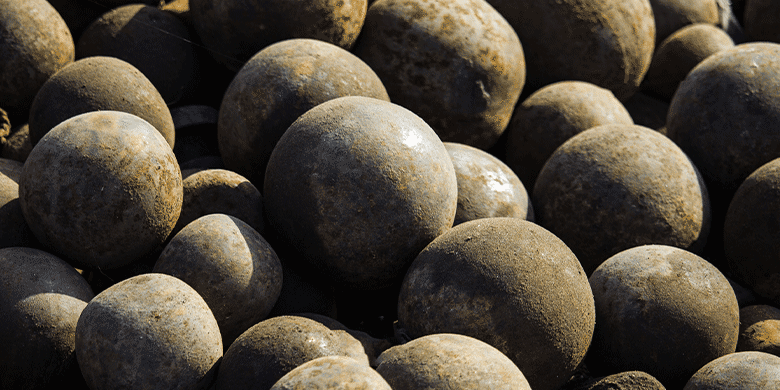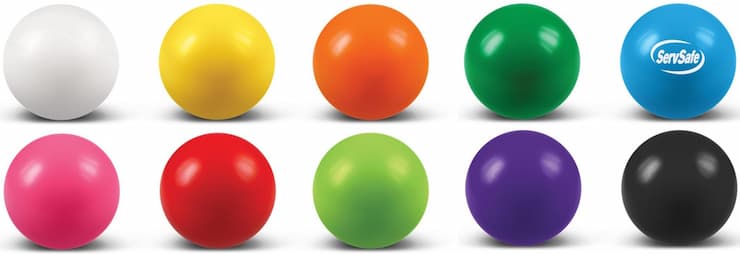
4 December, 2023
The Evolution of Stress Shapes: From Simple Balls to Complex Designs
Stress shapes have carved out a significant place as a simple yet effective tool for alleviating tension. Starting from humble beginnings as simple spherical objects, these handy accessories have undergone a considerable evolution in terms of design, materials, and functionality. Here, we look at the progressive journey of stress shapes from their simplistic origins to the complex designs we see today.
The Early Days

In the nascent stage of their existence, custom stress shapes bore a humble and rudimentary design, uncomplicated yet efficiently serving their purpose as a stress relief tool. Often moulded into a spherical shape that comfortably fits into the palm of a hand, these objects were primarily crafted from materials such as foam or rubber, which provided the perfect amount of resistance to the human grip.
This period, which one might refer to as the inception of stress management tools, saw the birth of a tool that resonated well with people for its straightforward approach to stress relief: the act of squeezing. Applying pressure onto these soft yet resilient materials, individuals found a simple way to channel physical tension and mental stress through repeated squeezing. This repetitive action promotes relaxation by facilitating muscle tension and release, which can help improve circulation and reduce feelings of stress.
The minimalist design also underscored the accessibility and ease of use, which would later contribute to its widespread popularity. Despite being rudimentary, these spherical stress shapes were highly portable, allowing individuals to carry them wherever they went, at work, home, or while travelling, thus offering a readily available solution to manage stress in various environments.
Moreover, their simplicity extended not just to their functional usage but also to their manufacturing process. These early stress shapes could be easily produced without the requirement for sophisticated technology or complex moulds, making them a cost-effective solution available to a wide audience.
In addition to their stress-relieving properties, early ones also found applications in physical therapy settings, where they were used to help patients rebuild muscle strength following injuries, effectively demonstrating their versatility beyond just stress management.
As we retrospect, the early days were characterised by simplicity meeting functionality. During this period, a basic physical tool could facilitate a sense of calm and ease in a straightforward yet effective manner. It laid a robust foundation for future evolution, setting a precedent for these objects' vital role in the stress management toolkit of individuals worldwide.
From Rubber to Gel and Beyond
As the wheel of time spun onwards, the industry began to evolve in terms of material innovation and design sophistication. This period marked a departure from the traditional rubber and foam materials, giving rise to many more advanced materials that sought to enhance the overall sensory experience associated with using stress shapes.
Manufacturers began experimenting with various materials, including introducing gel-filled interiors enveloped by a fabric or rubber exterior. This innovative approach significantly transformed the texture and feel of stress shapes, offering users a more gratifying tactile sensation. The gel interior conferred a softer, more malleable texture, responding dynamically to pressure and offering a comforting and soothing effect as individuals squeezed and manipulated the shapes in their hands.
Furthermore, different materials facilitated a wider range of textural experiences, enabling users to choose from stress shapes that offered diverse tactile sensations — from the silky smoothness of fabric exteriors to the more resilient resistance offered by rubber coatings. This period saw stress shapes becoming more than just functional objects; they became sensory toys offering a rich tapestry of tactile experiences that could cater to different sensory preferences, from those seeking a softer touch to others preferring a firmer grip.
As a result, these advanced materials brought a higher degree of personalisation, allowing individuals to choose products closely aligned with their sensory preferences and stress relief needs. It also fostered a more inclusive approach, where people with varying tactile sensitivities could find a stress shape that was perfect for them.
The shift towards varied materials prompted manufacturers to infuse additional features into stress shapes such as aromatherapy elements where the stress shapes could release calming scents during use, adding another dimension to the stress relief experience.
The transition "from rubber to gel and beyond" marked a significant milestone, morphing them from simple stress-relief tools to versatile, multi-sensory gadgets designed to offer a more rounded, enriched experience catering to individual nuances and preferences. This period enriched the tactile experience and embodied the spirit of innovation, steering the industry towards continuous development and expansion, setting the stage for a future replete with possibilities and innovations yet to come.
Complex Designs and Themed Shapes

The hallmark of this era is the inception of themed stress shapes that echo a staggering diversity of motifs. Manufacturers have harnessed innovative manufacturing technologies to craft them resembling a vibrant array of entities, including but not limited to animals, mythical creatures, everyday objects, and food items. This was an age where creativity knew no bounds, and the market saw the advent of stress shapes resembling anything from a playful dolphin to a succulent burger, bringing a riot of shapes, colours, and textures into the domain of stress relief tools.
These detailed and imaginative designs turned them into an object of joy, a tangible manifestation of fun and personality. People could now choose one that mirrored their hobbies, interests, or even their favourite foods, bringing a deeply personal touch to the experience of stress relief. They became conversation starters, personal statements, and even a source of joy as people collected various shapes, building their own little trove of happiness.
The rich diversity in design fostered a culture of collection. Individuals began to perceive them as collectable items, each unique design becoming a cherished part of personal collections. This elevated them from mere tools of relaxation to sought-after items for enthusiasts. Moreover, they started featuring as delightful gift items, offering a quirky yet thoughtful gesture, especially as customisation options became increasingly prevalent, allowing for personalised messages and designs to be incorporated, making them wonderful keepsakes.
Beyond their aesthetics, they have a salubrious effect on mental health. Having a little piece of joy to hold and squeeze can be a source of instant mood upliftment, a small yet potent weapon in battling daily stresses. The designs could invoke a sense of joy, nostalgia, or even a hearty laugh, all contributing positively to individuals’ mental well-being.
Meeting Individual and Corporate Needs
The modern era of stress shapes is characterised by a high degree of customisation, where individuals and corporations can tailor the shapes to suit their specific needs and branding requirements. Be it a logo, a mascot, or any other design, the current market offers unlimited possibilities to create unique stress shapes that serve as both a stress relief tool and a potent promotional item.
Technological Integration
One of the defining features of these next-generation stress shapes is their ability to sync seamlessly with mobile applications. This connectivity heralds a radical shift in how we perceive and use them. Individuals can now gain insights into their stress levels and patterns through data they capture, which communicates with mobile apps to comprehensively analyse one’s stress profile over time.
The realm of personal health and well-being has seen an uptick in personalised solutions, and technologically integrated stress shapes are a proud entrant in this category. These devices can track your stress levels meticulously, charting patterns and trends based on your usage. This feature enables a personalised approach to stress management, with users able to identify specific triggers and peak stress periods, thereby facilitating a more targeted approach to relaxation and self-care.
Taking the concept of stress relief a notch higher, they come loaded with features that offer guided relaxation exercises. Synced with mobile apps, they can guide individuals through a series of relaxation techniques, leveraging audio-visual aids and haptic feedback to offer a rich, immersive experience. This symbiosis of tactile stimulation with guided exercises augments the stress relief process, offering a holistic approach to calming one’s mind and body.
The feature of real-time feedback adds to their user-friendly nature of them. Users receive immediate responses and insights into their stress management session, which not only fosters a sense of accomplishment but also aids in fine-tuning one’s relaxation techniques over time, encouraging a continuous journey of self-improvement and well-being.
In a nutshell, they stand as a beacon of holistic well-being. They offer not just a tool but a companion in one’s journey towards a calmer, healthier self. By marrying the physical act of stress relief through squeezing and pressing with insightful digital features, they foster a rich, multi-dimensional approach to well-being, inviting users to engage more deeply and thoughtfully with their stress management practices.
Environmental Concerns and Sustainable Options
One of the considerable strides in this direction is manufacturing using recycled materials. By reusing materials, manufacturers reduce the waste generated and conserve natural resources that would otherwise be used in production. This circular approach to production is not just eco-friendly but also sets a precedent for other industries to follow.
The introduction of biodegradable materials marks a revolutionary step in the industry. These products, when discarded, can break down naturally without leaving any harmful residue, thus reducing their environmental footprint substantially. This feature ensures they do not become the environmental burdens of tomorrow, fostering a healthy cycle of use and safe disposal.
There has been a discernible shift towards reducing the chemical footprint of stress shapes. Manufacturers are opting for materials and production processes that curtail the use of harmful chemicals, thus reducing pollution and offering products that are safer for both the environment and the users.
Conclusion
From simple balls to designs that can be customised to an individual's or a company’s specific needs, the journey of stress shapes has been marked by innovation and adaptability. As we stand on the cusp of a new era where technology and sustainability are becoming integral aspects of product development, stress shapes are poised to evolve further, offering a way to relieve stress and promote well-being and mindfulness in a busy world.
Whether you are a collector, a corporate entity looking for promotional items, or someone seeking effective stress management tools, this dynamic world offers something for everyone. Their evolution mirrors the changing dynamics of our society, where the quest for personal well-being meets innovation, bringing forth enjoyable and beneficial products promoting mental health.
The Stress Balls Only Team




